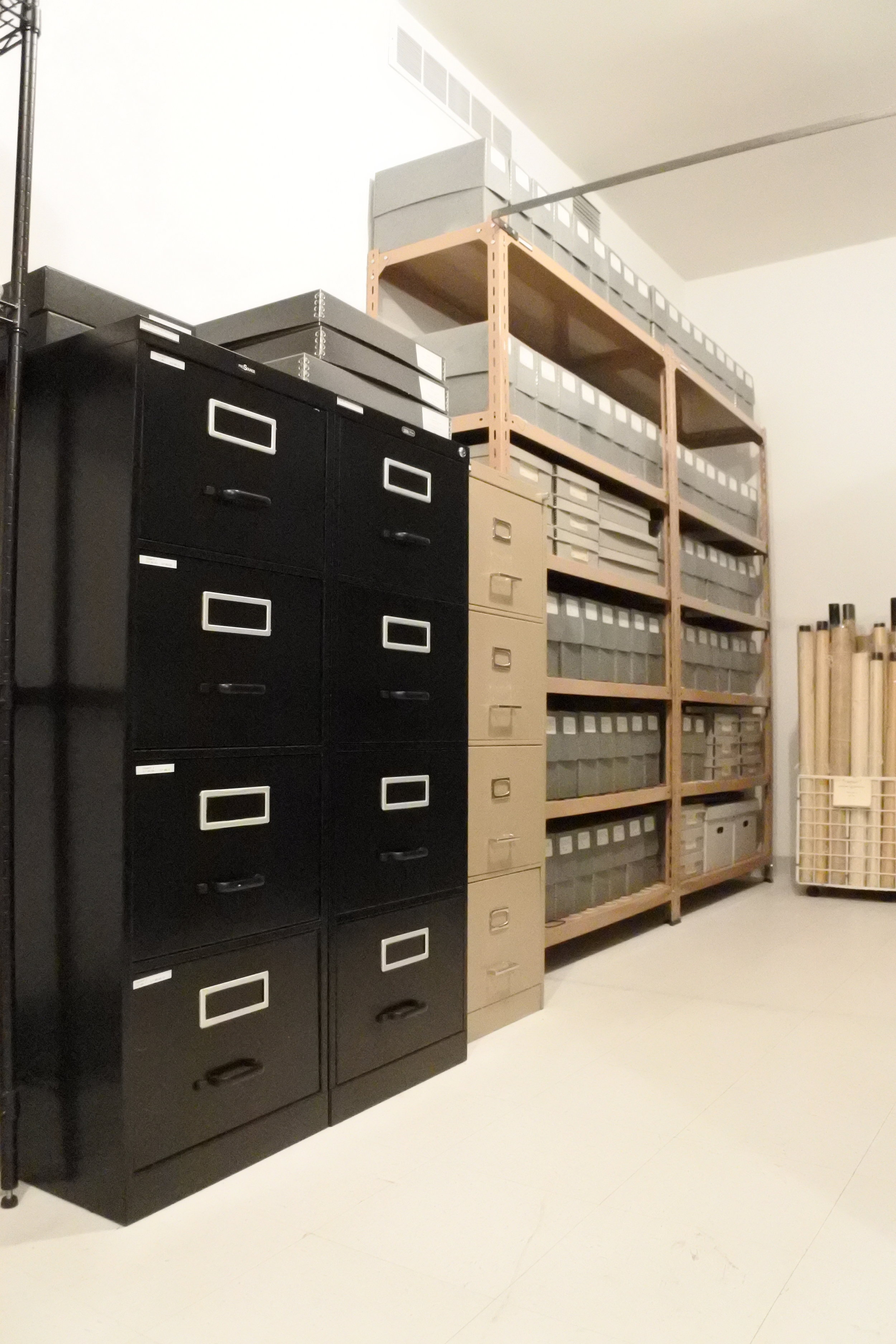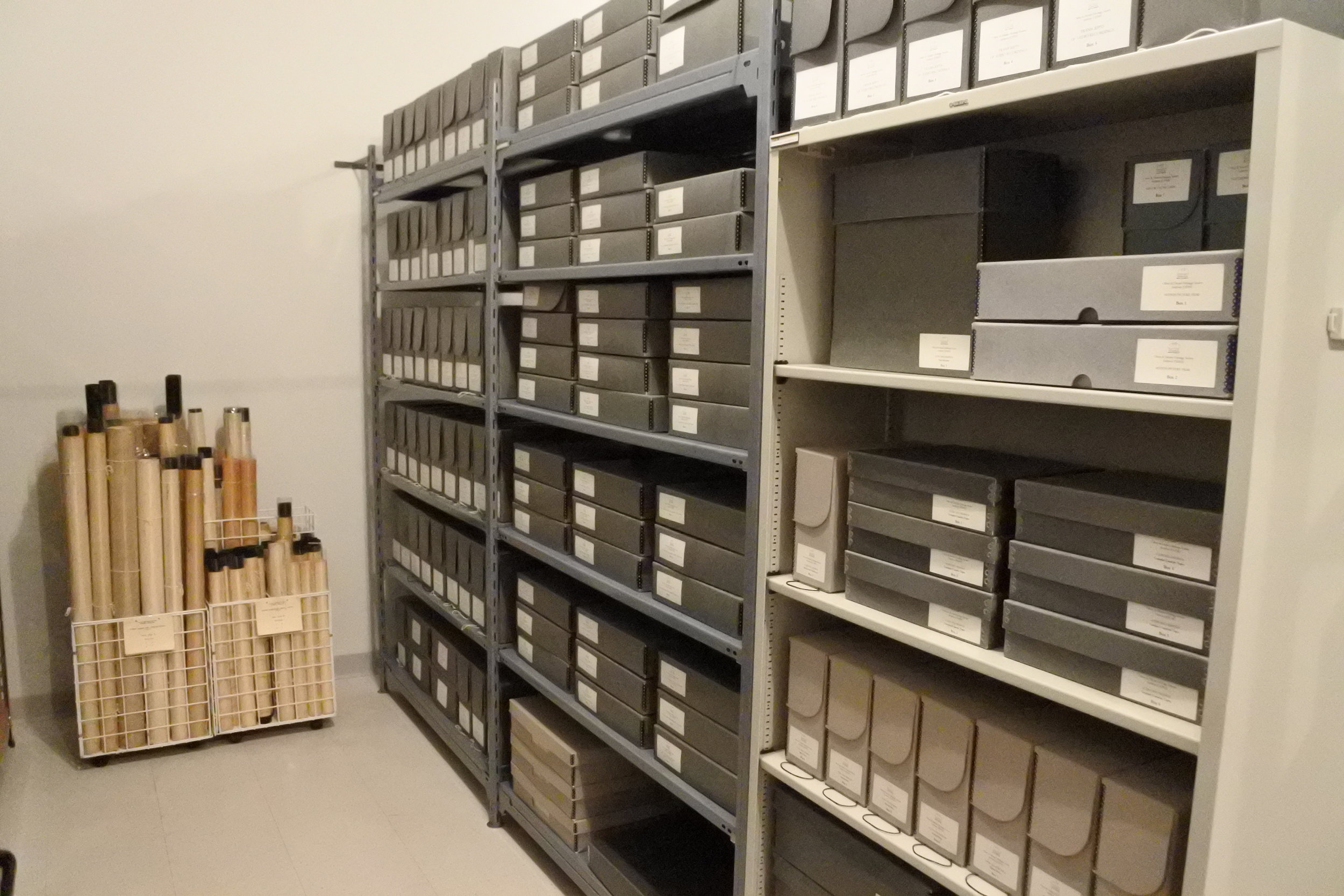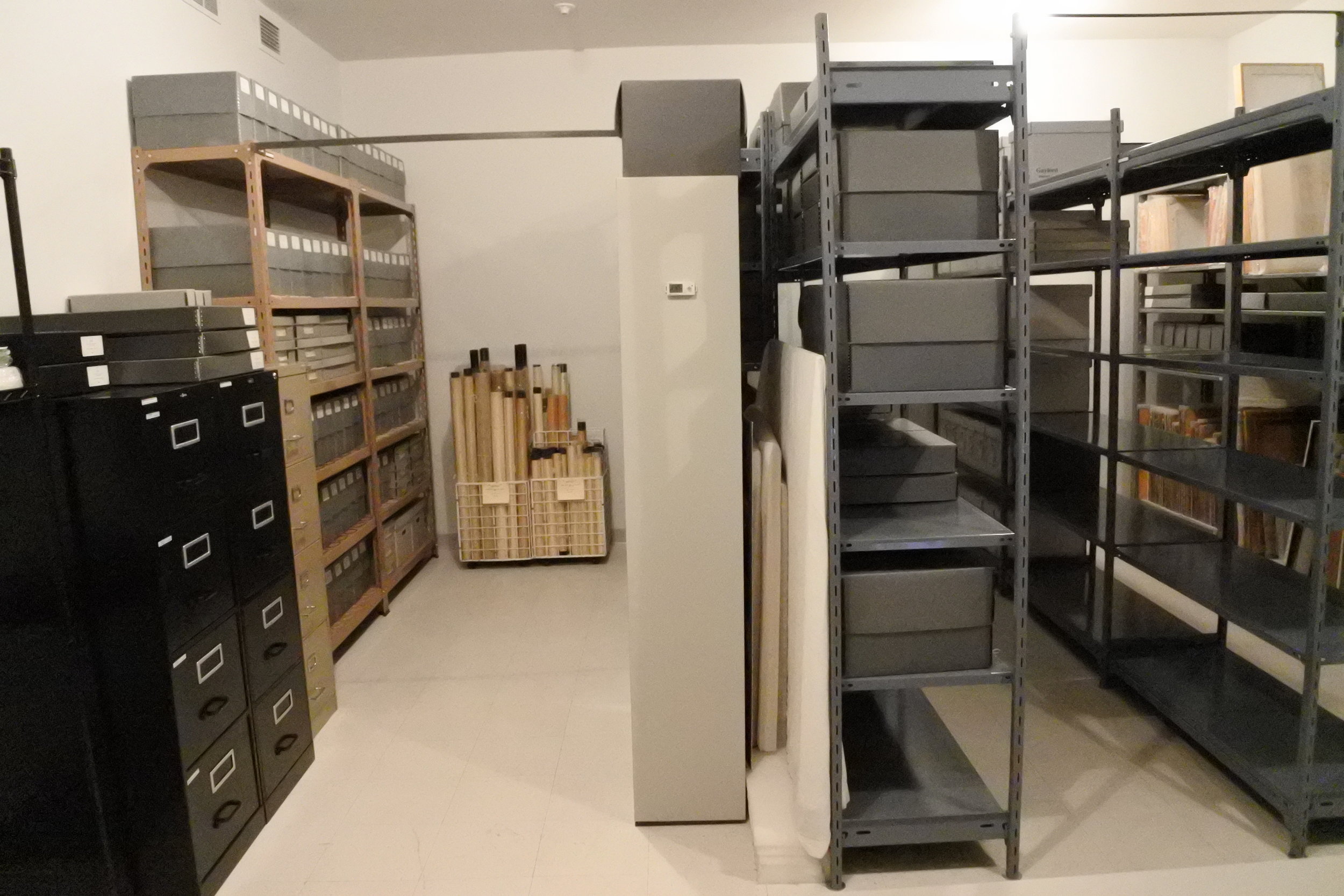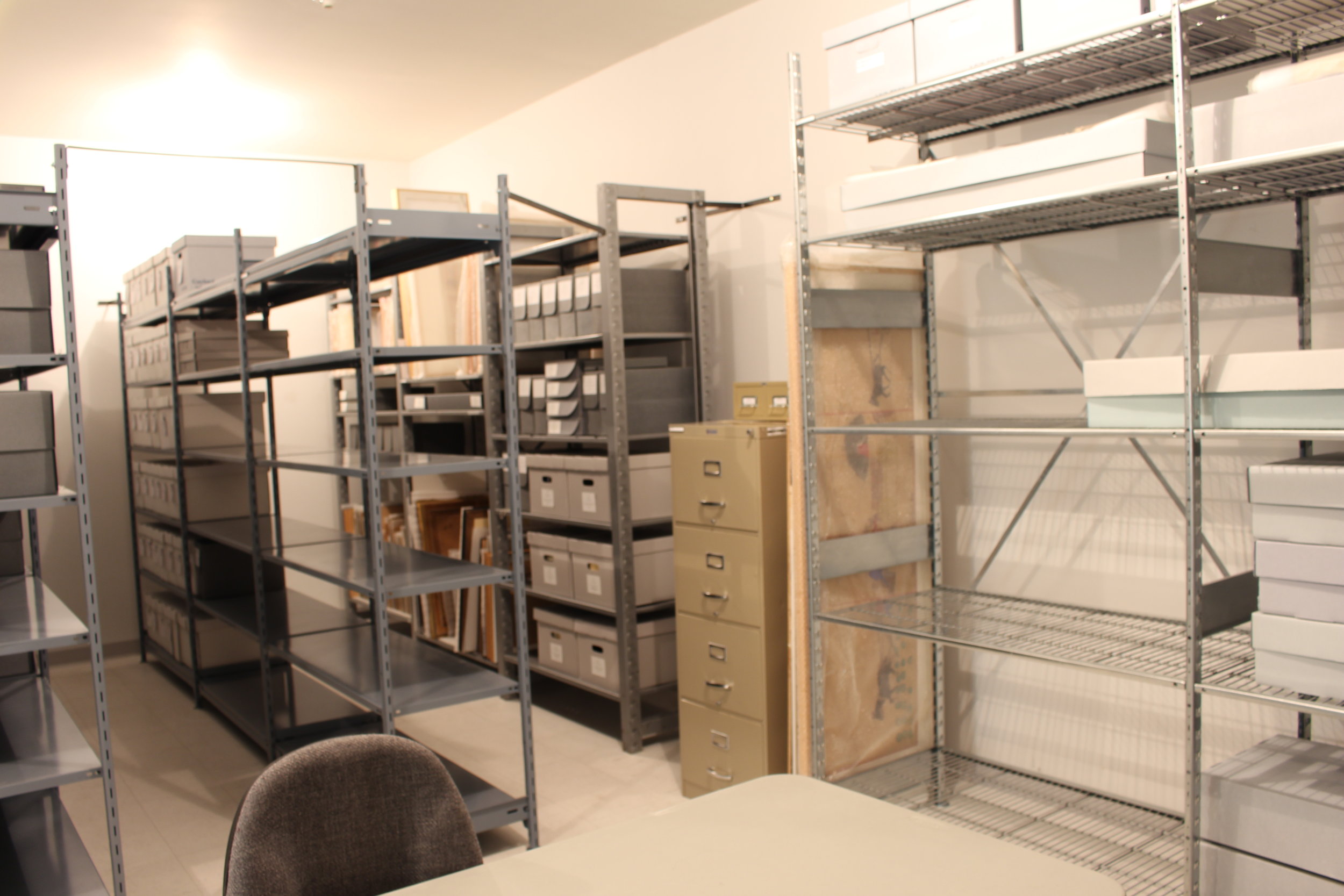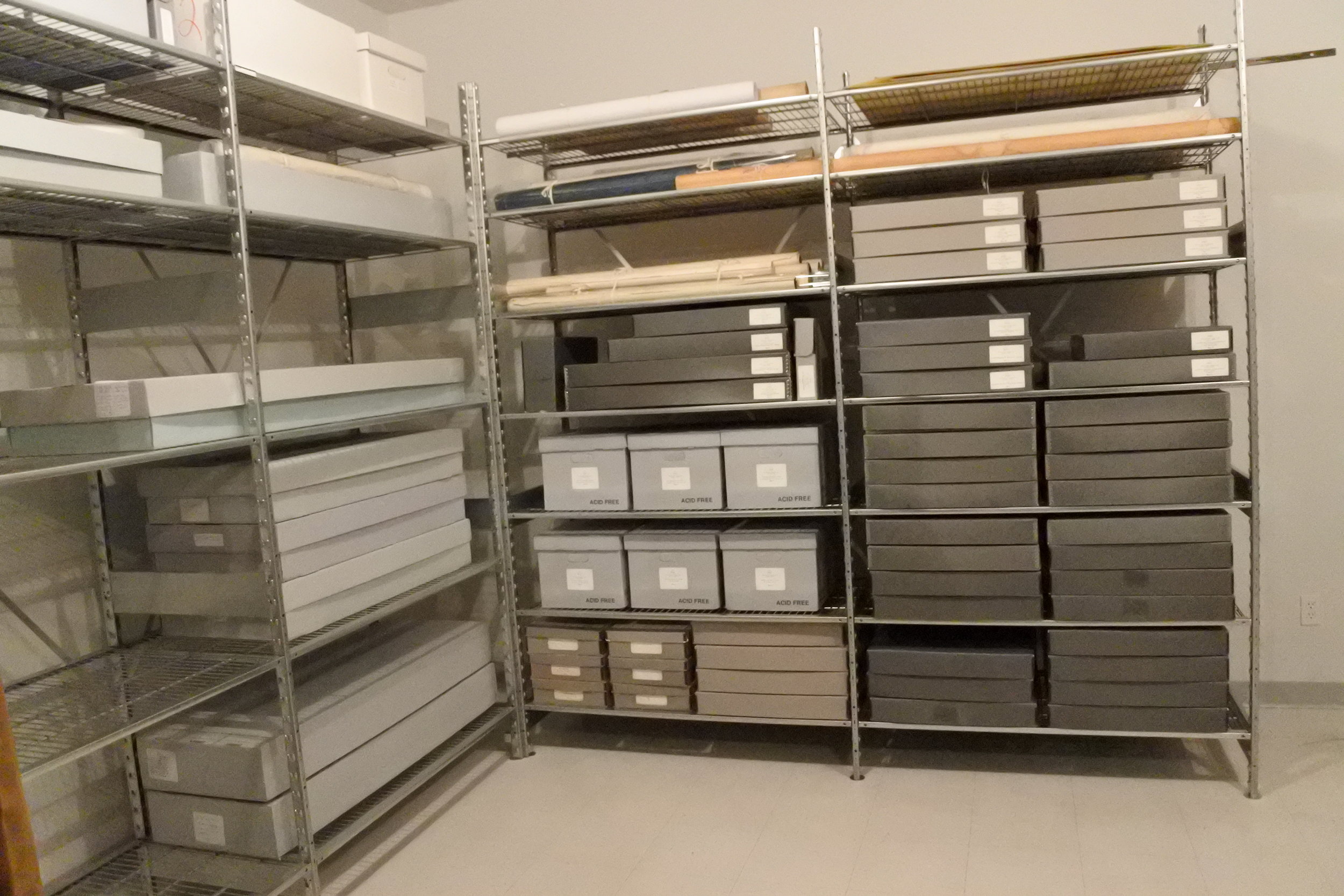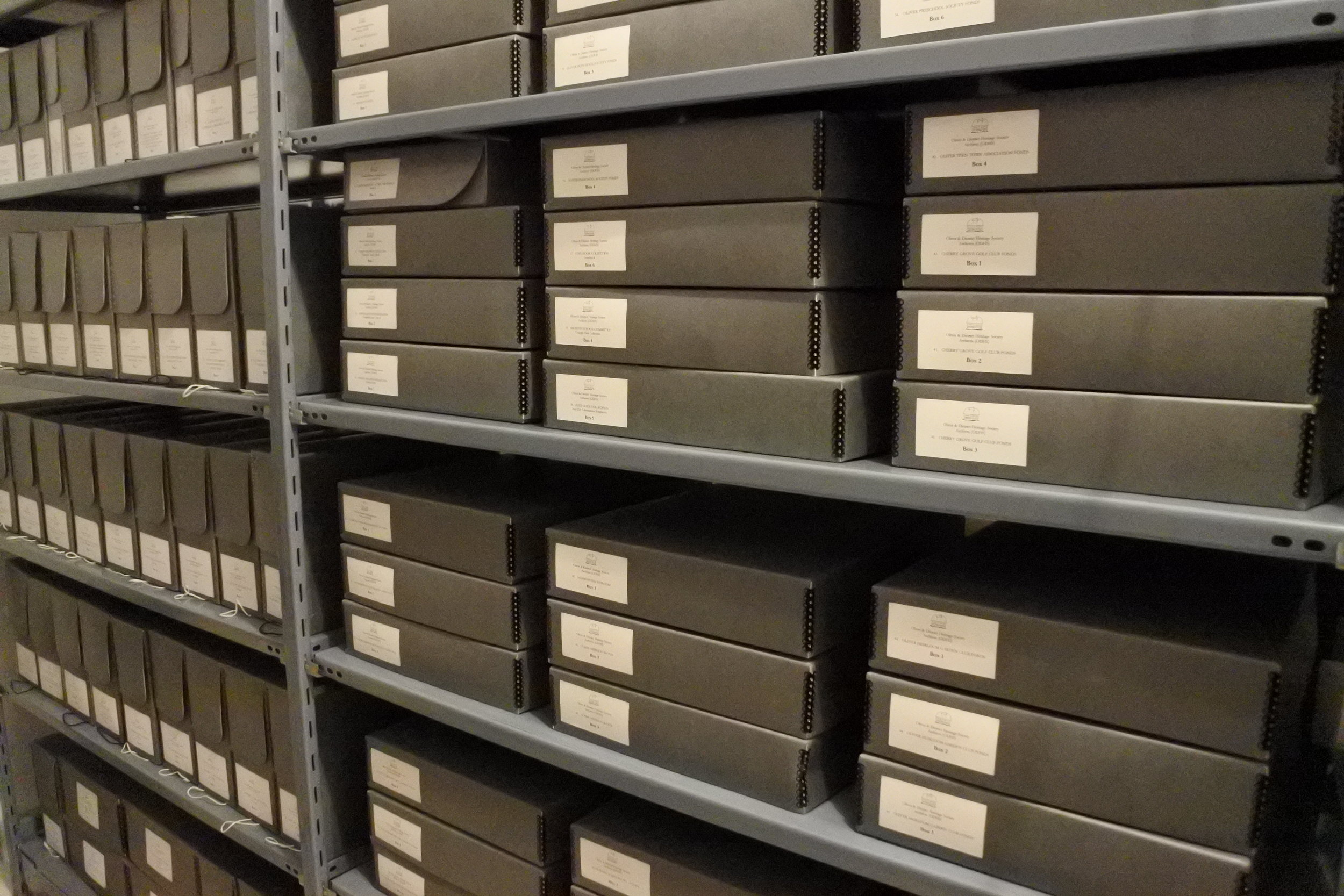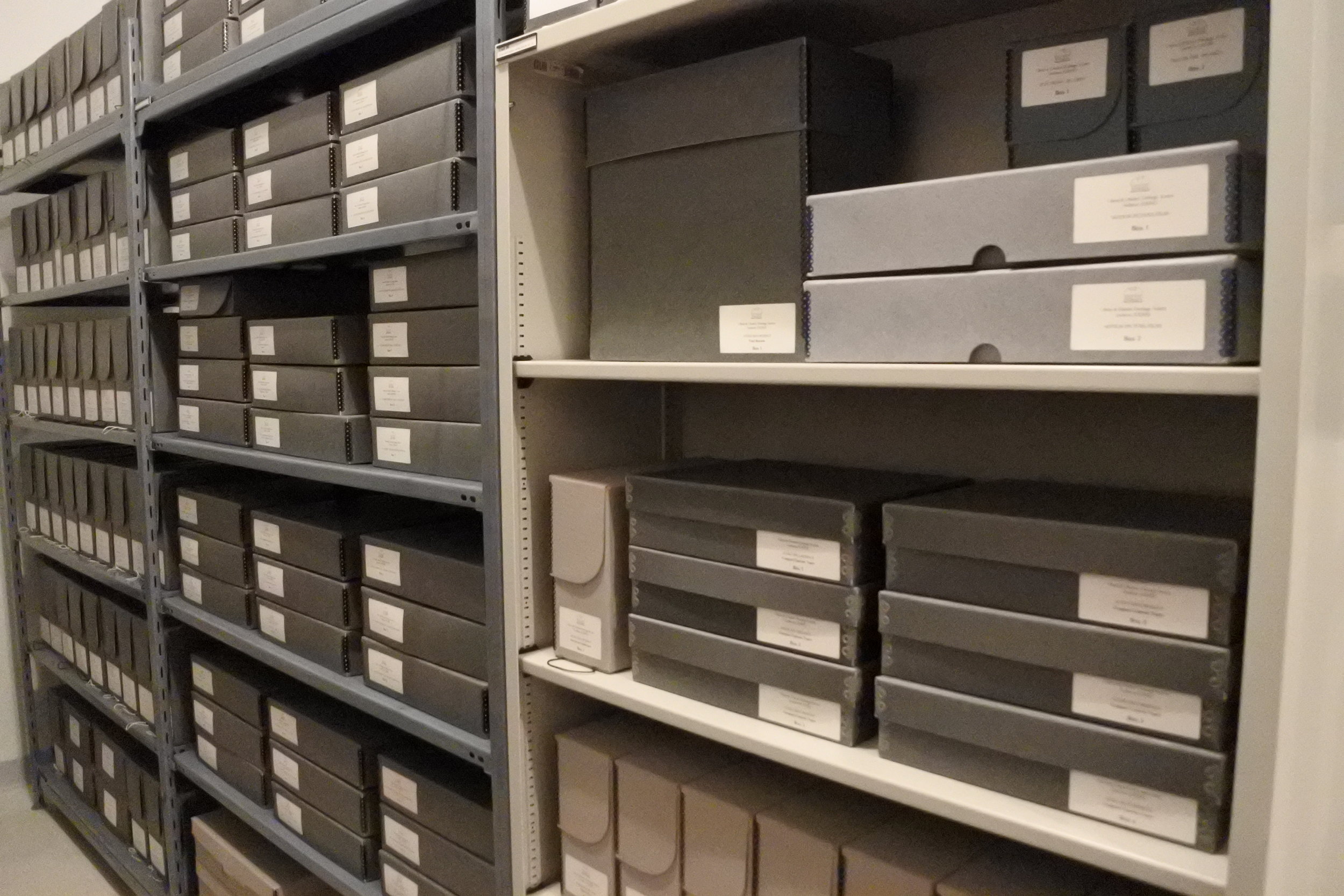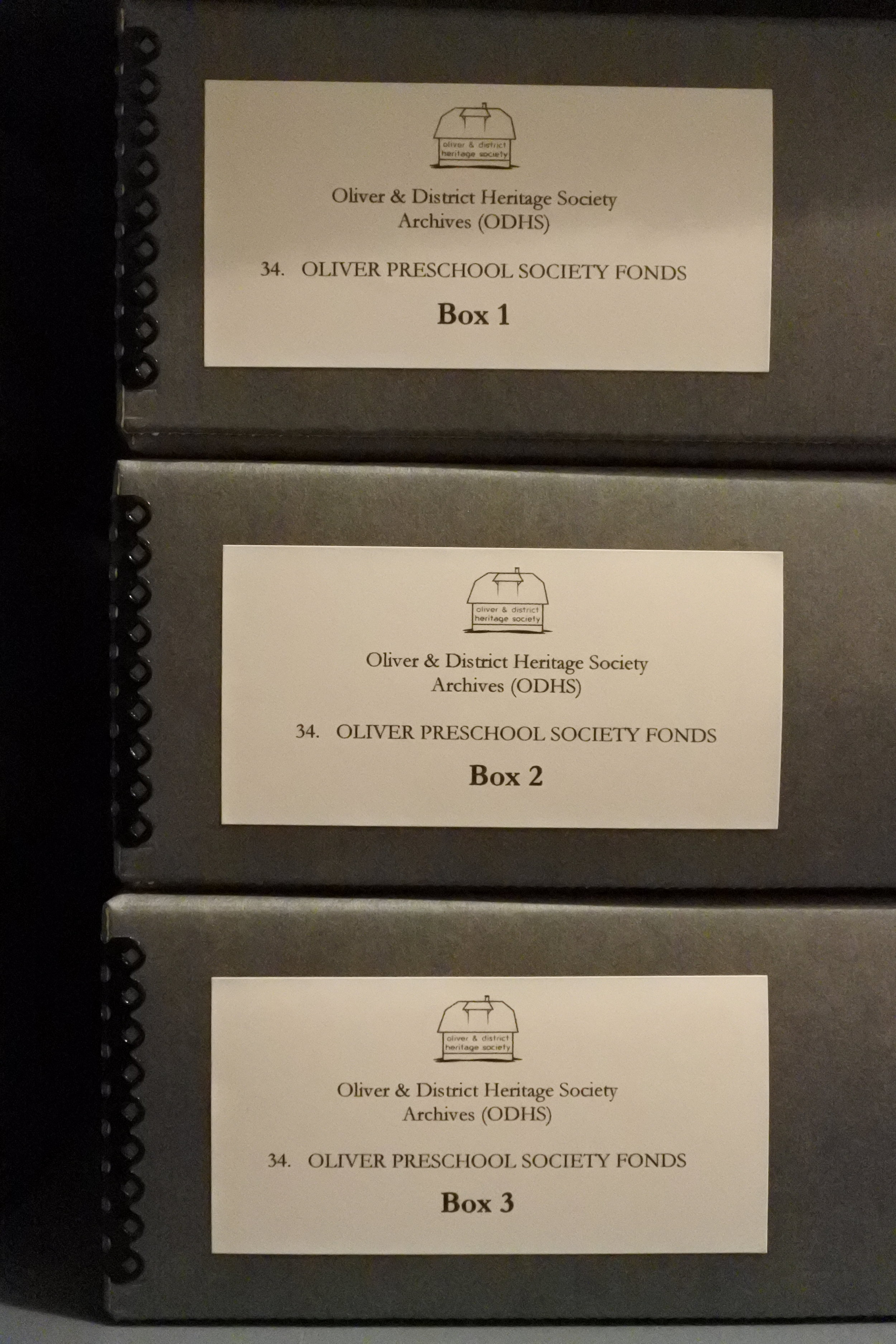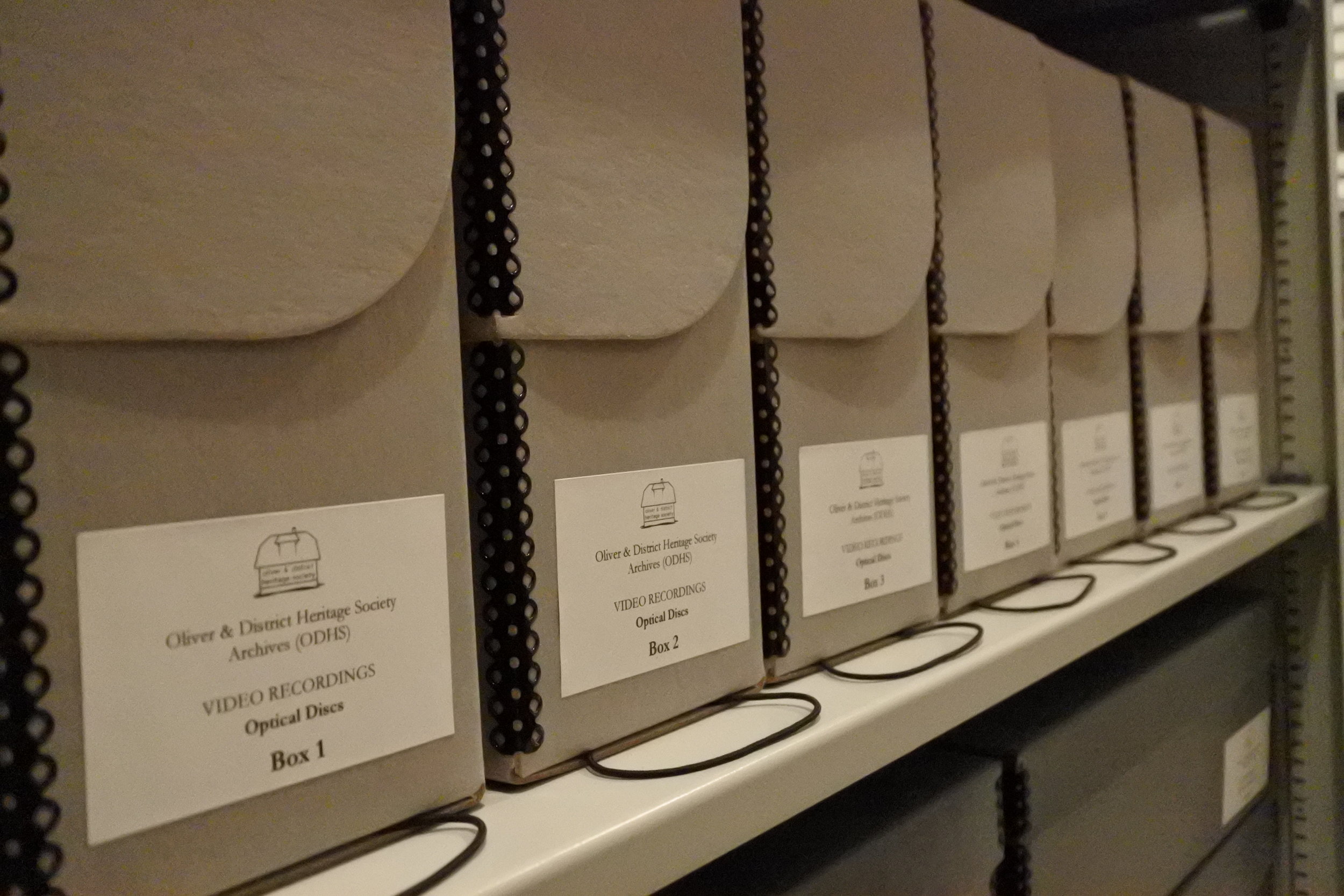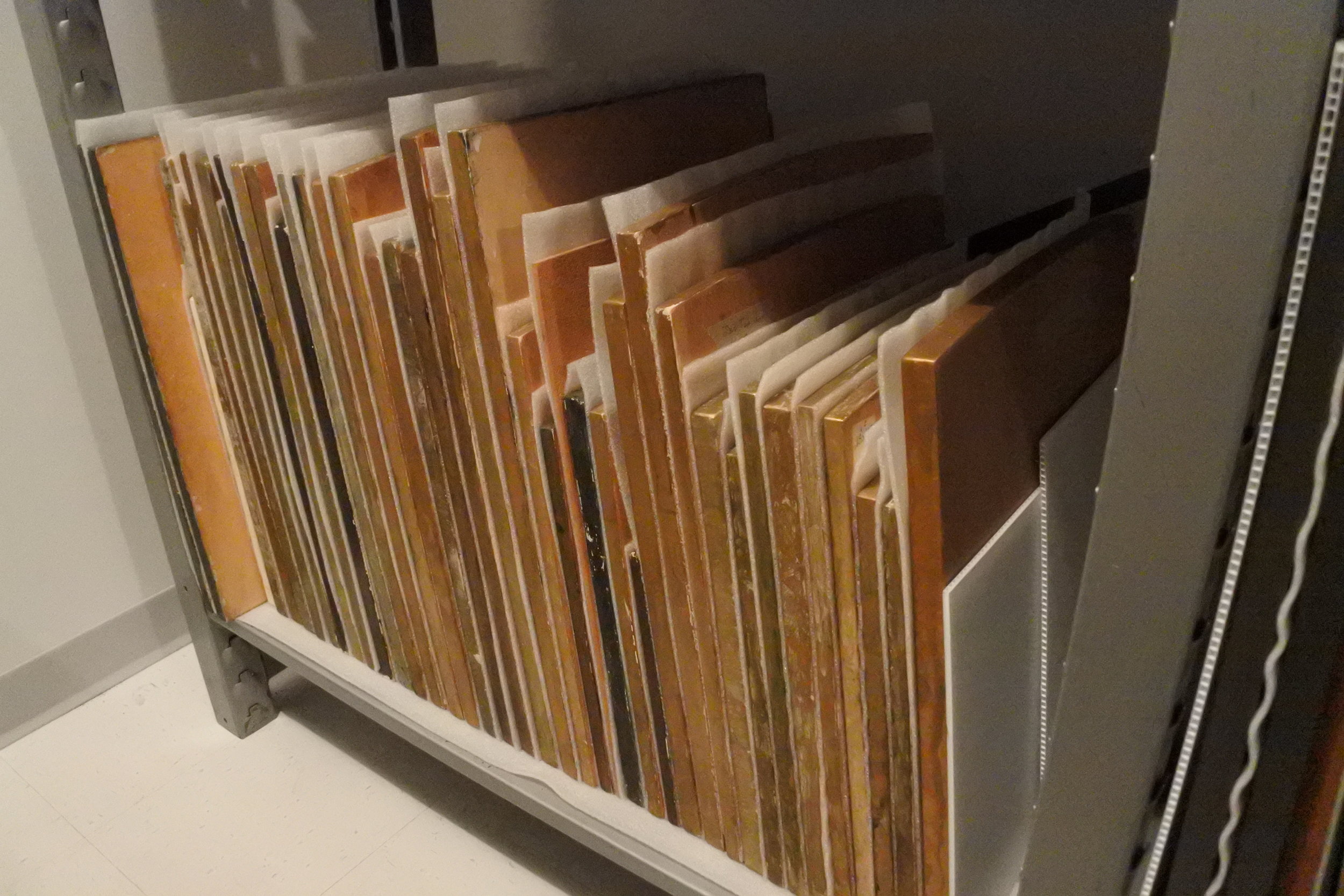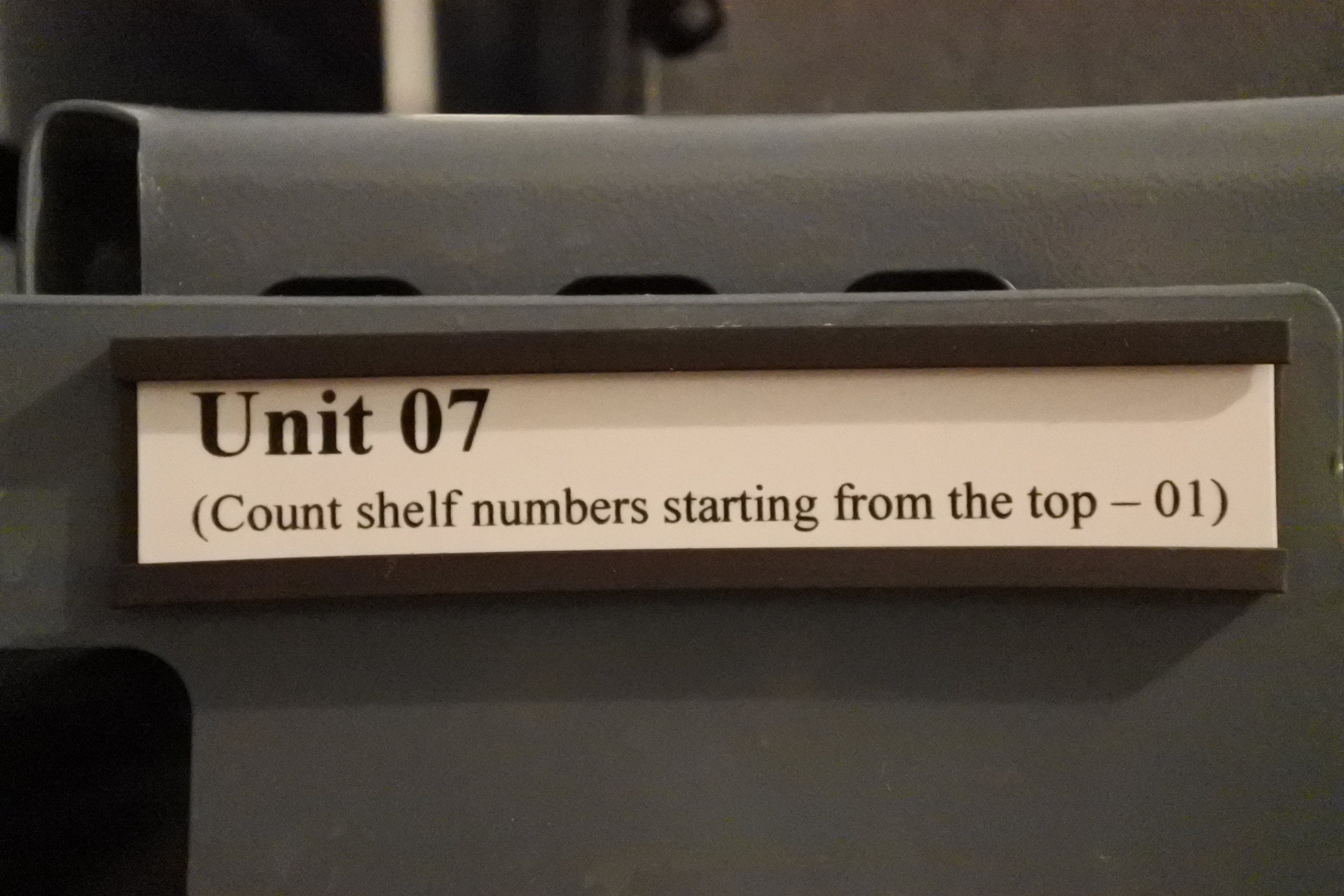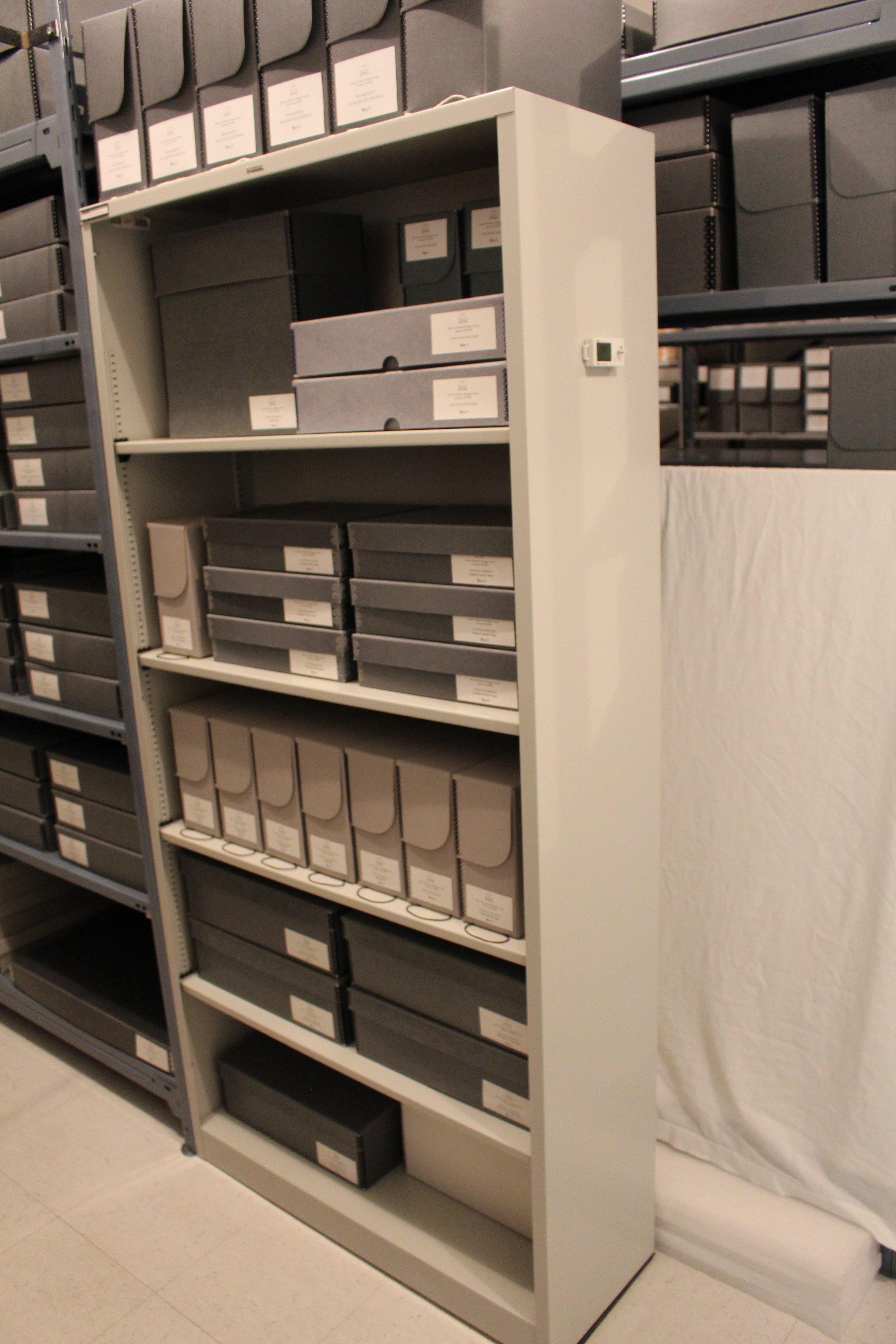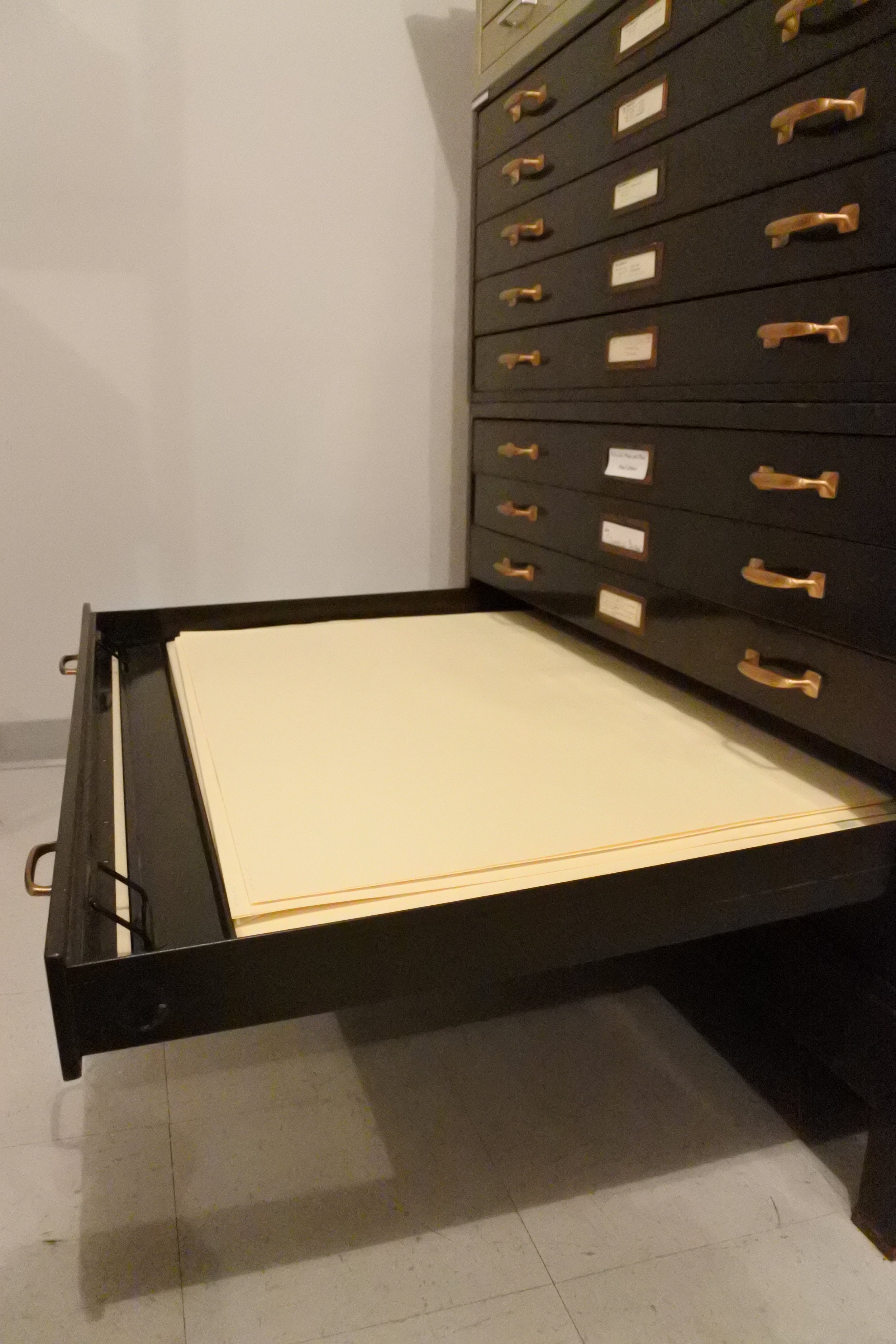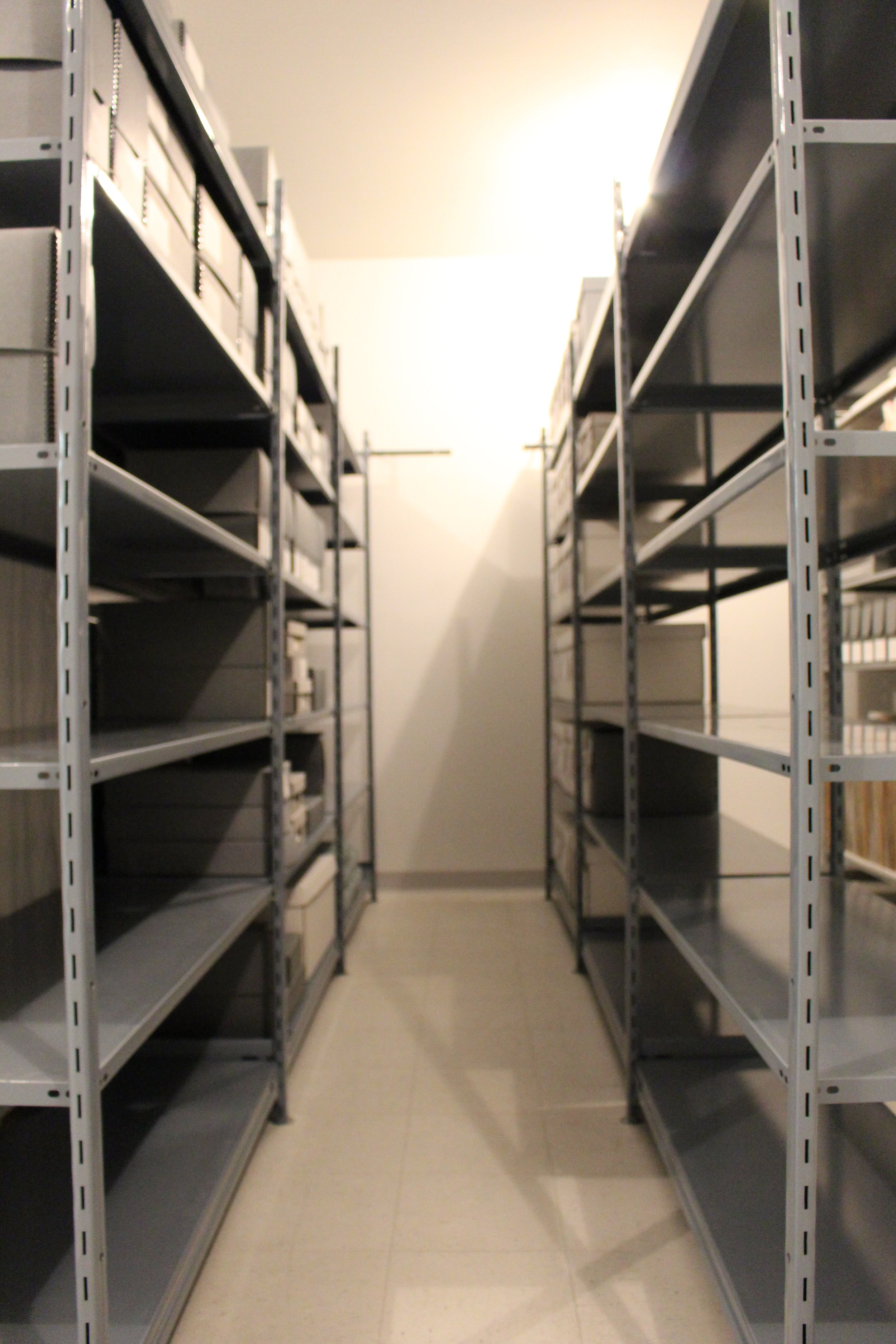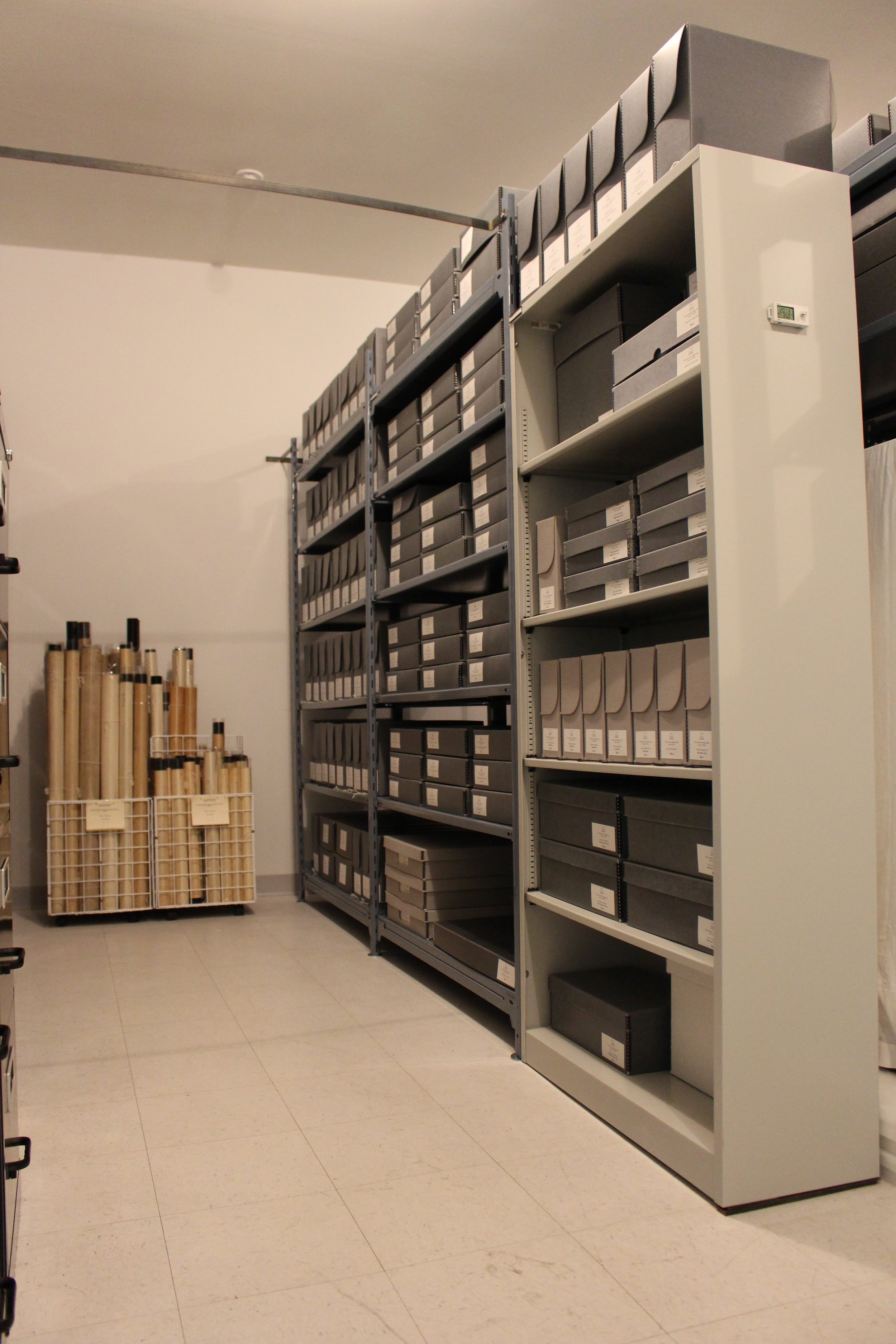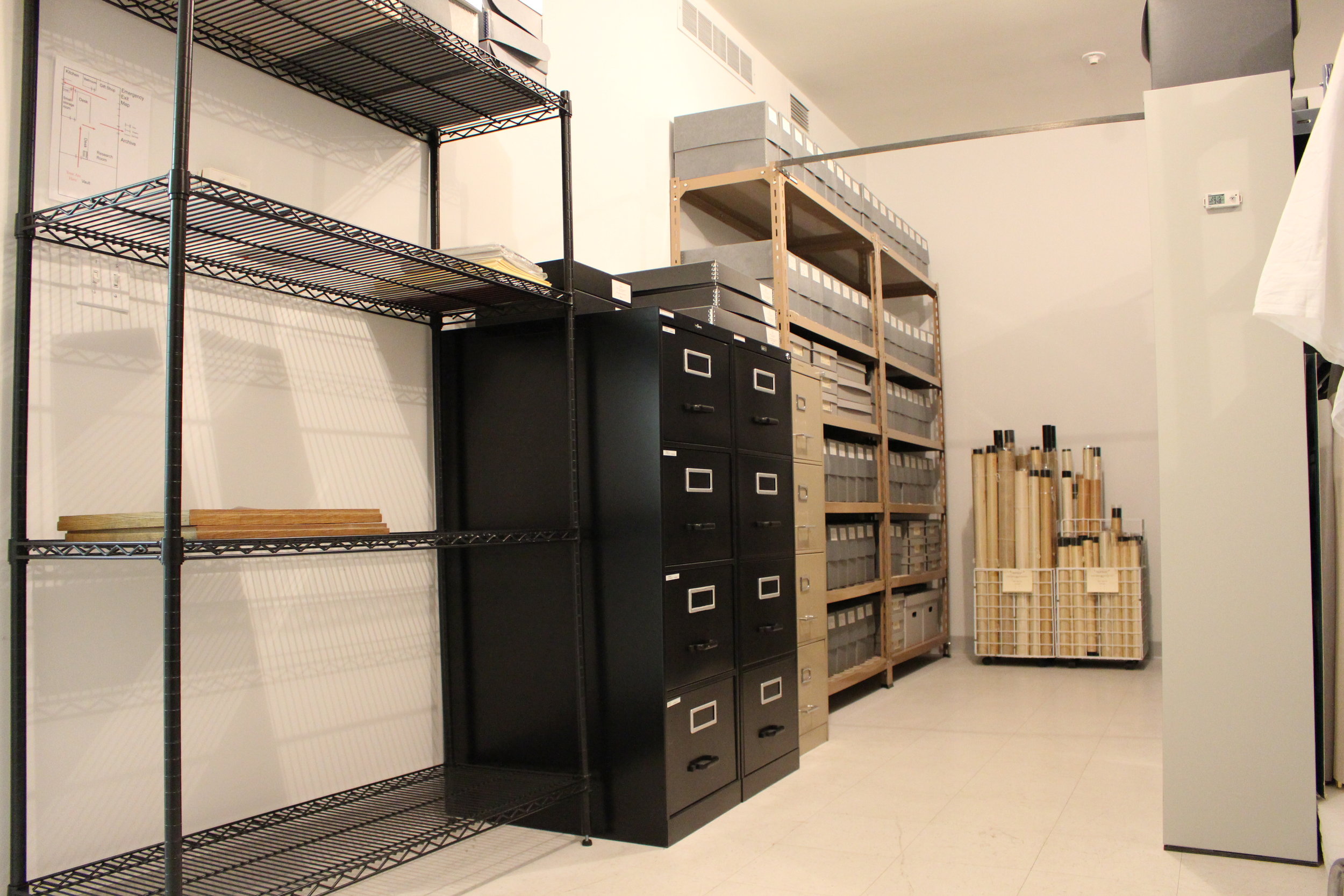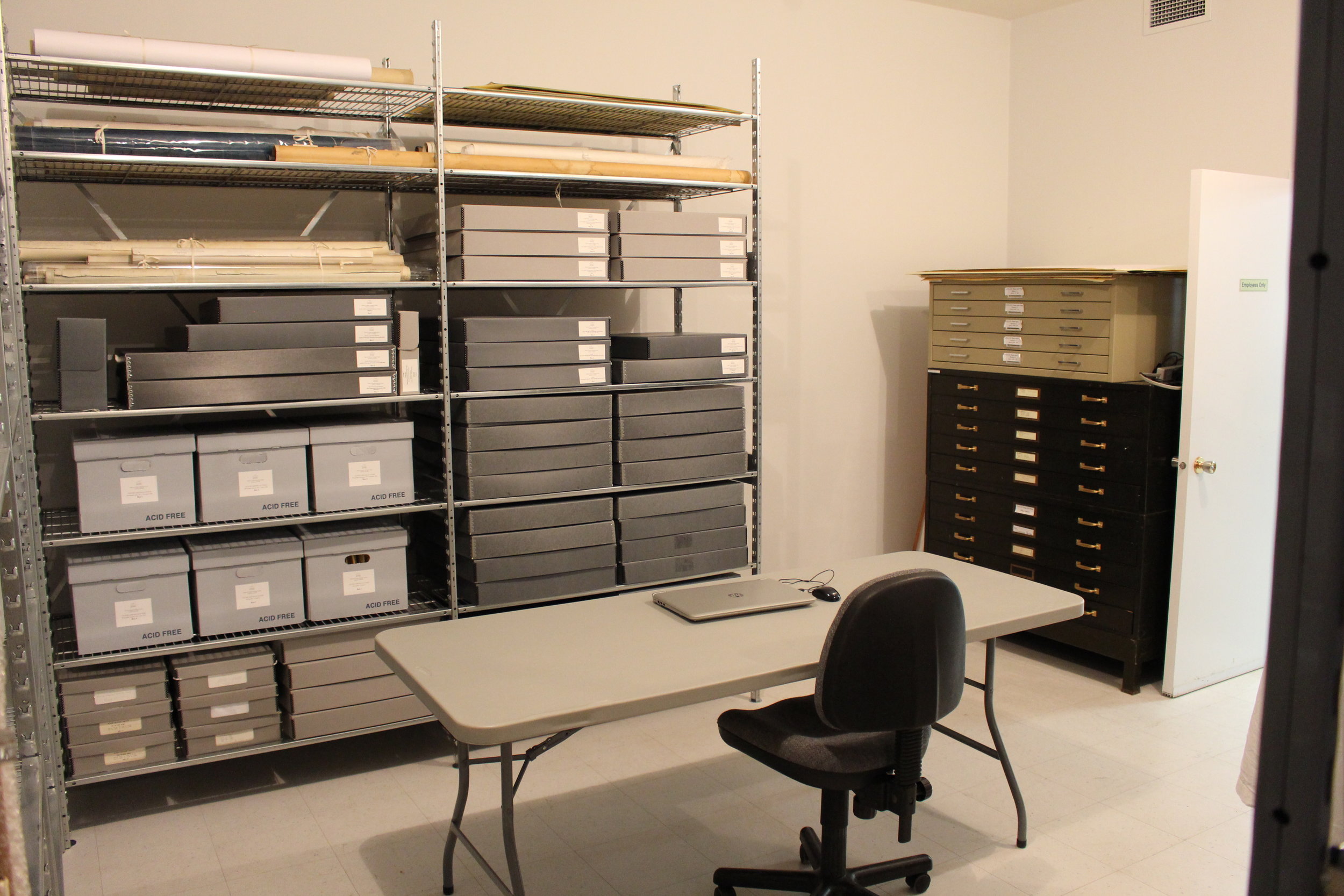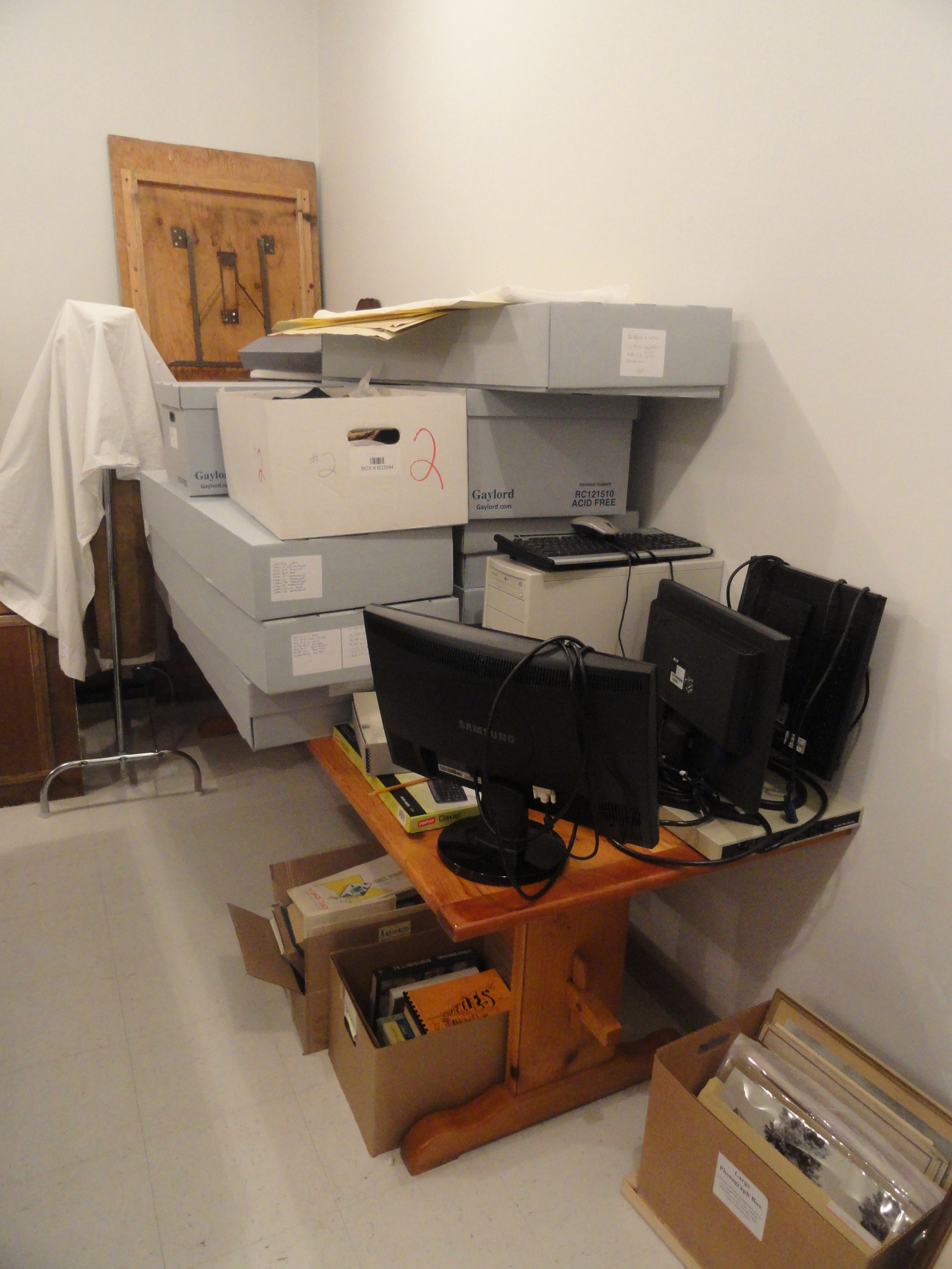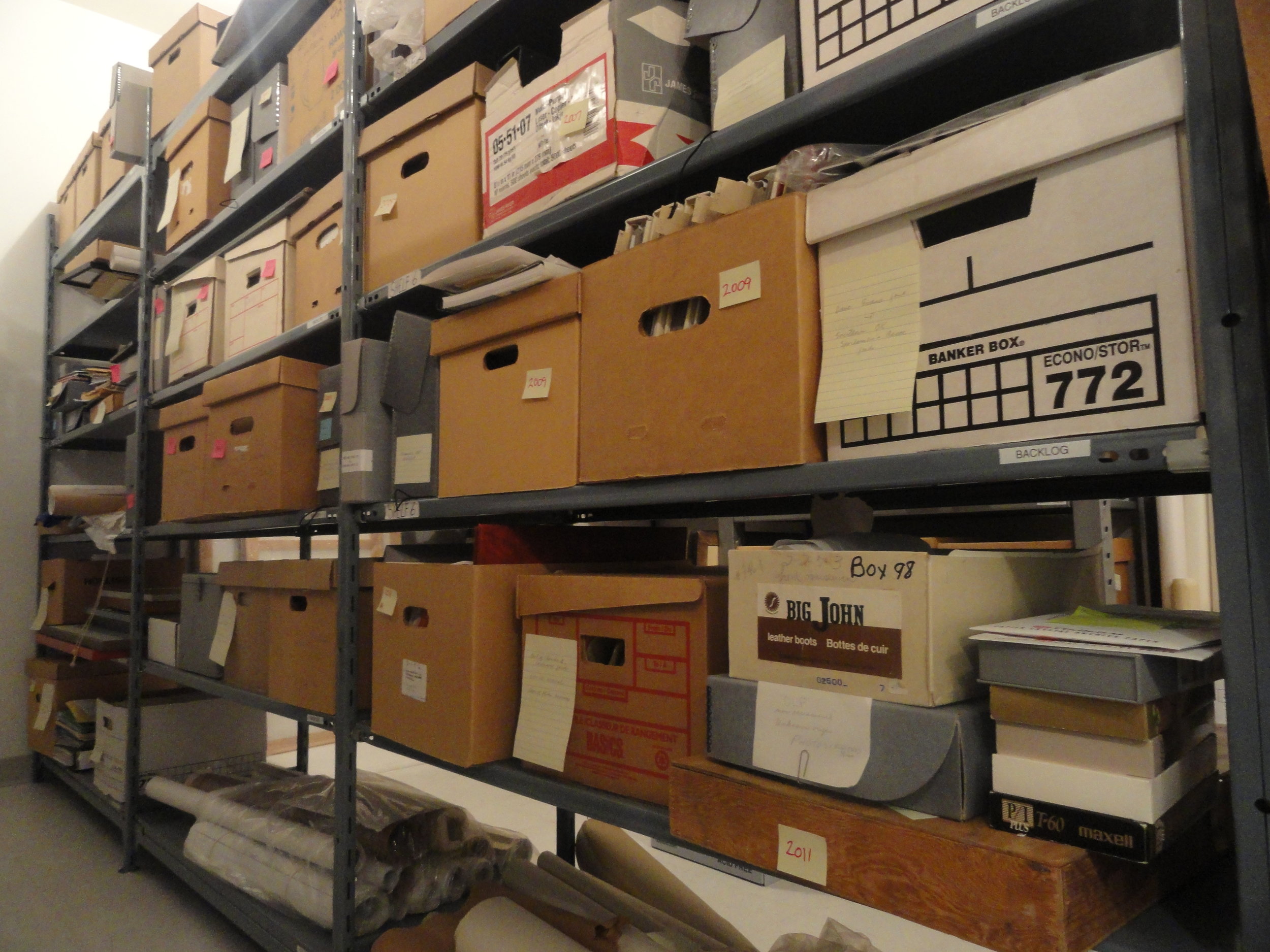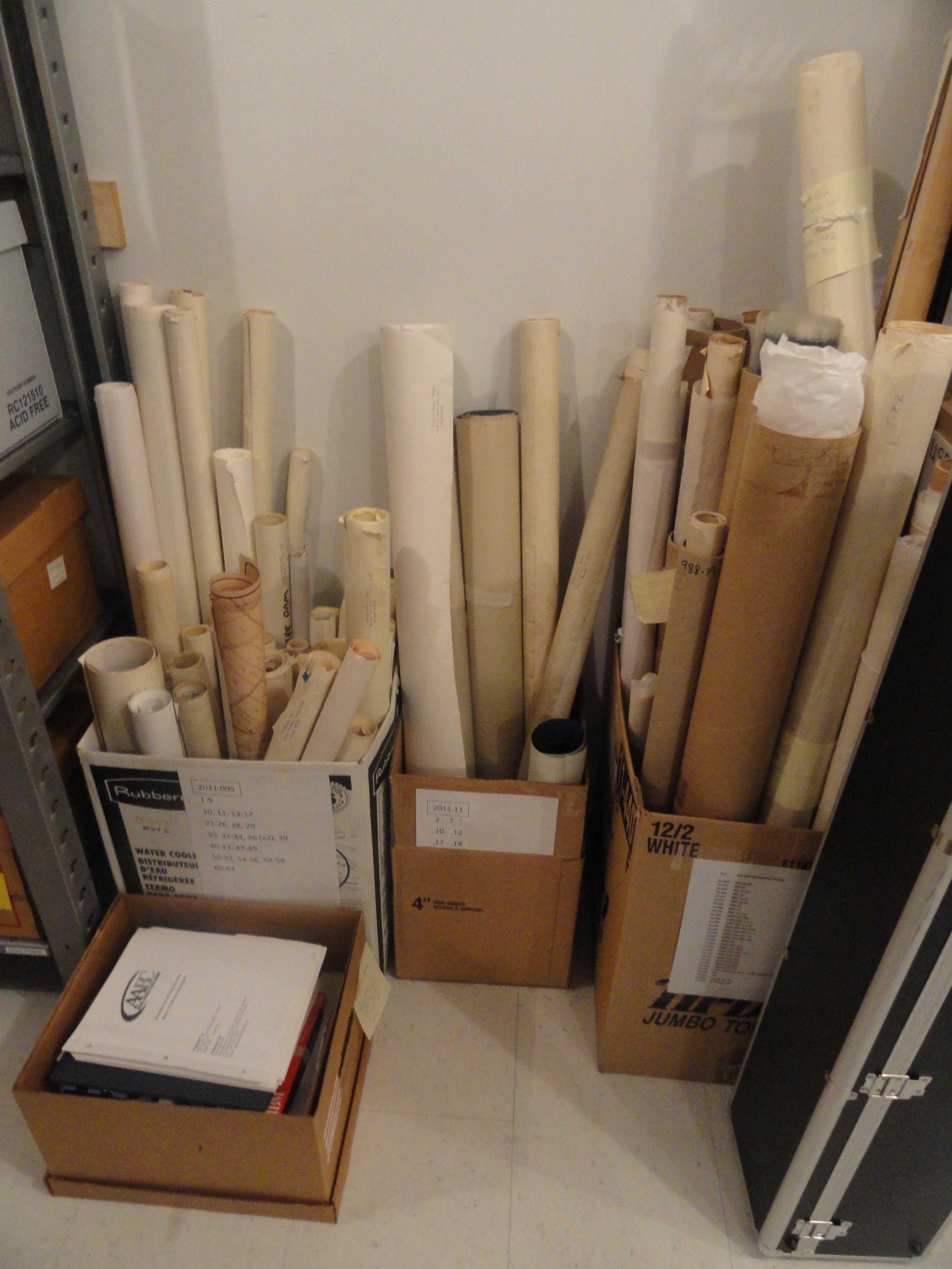Great news!
We're very pleased to show you that those items - previously inaccessible and unknown for the most part - are now part of our collection, properly housed and stored, with vast improvements simultaneously being applied to the entire Vault storage area. We're now prepared for fire, flood, and earthquakes! We've also reduced the collection's exposure to UV radiation, introduced a new electronic system of recording temperature and humidity fluctuations, removed all of the acidic materials previously housing documents, and conducted a thorough disinfection of the space.
The Archives backlog, begun in September 2016, is now completed one year later. Just to recap, we received a substantial grant from Library and Archives Canada, who supported us through their Documentary Heritage Communities Program to the tune of $79,000. This support allowed us the chance to hire two staff to tackle the backlog of items in the Archives representing a few decade's worth of archival donations and past projects that had never been fully integrated into the collection.
Processing donations is surprisingly time consuming – the Archives Association of BC estimates that every photograph or document requires between 2 and 6 hours of time to properly place into a collection. This includes getting all of the legal documentation in place, researching the item’s provenance and significance, cleaning and applying preservation methods, rehousing the item in proper storage, and adding it to the archive’s catalogue.
We would like to thank Library and Archives Canada for their generosity. We would also like to thank our volunteers and staff, the community of Oliver, the Town of Oliver, and the RDOS for their continued support.
The Archives' collection is now where it needs to be, and we wouldn't be here without their contributions.
By the numbers
- 4,640 hours of staff time
- 136 hours volunteer time
- 217 maps + plans cleaned and flattened
- 489 photographs digitized and added to collection
- 18 meters of backlogged materials rehoused and added to collection
- 87 new accessions
- 15 items transferred to other Museums
- 29 meters of new shelving added to Vault storage
- 88 signed gift forms
- 367 GB digital backup of collection
BEFORE (Sept 2016)
AFTER (Sept 2017)
Here's a gallery of the completed project:
